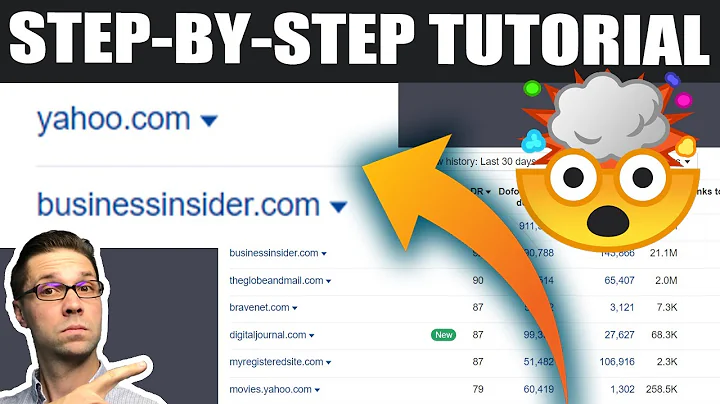Boost Your Shopify Store's Visibility with SEO Best Practices in 2023
Table of Contents
- Introduction
- Keyword Research and Optimization
- Meta Titles and Meta Descriptions
- Image Alt Text
- URL Structure Optimization
- Mobile Optimization
- Page Speed
- High-Quality Content
- User Experience
- Website Security
- Schema Markup
- Social Media Integration
- User-Generated Content
- Monitoring and Adaptation
- Conclusion
Shopify SEO Best Practices in 2023: Boost Your Store's Visibility
In the ever-evolving world of e-commerce, staying ahead of the competition requires a comprehensive and up-to-date approach to search engine optimization (SEO). Shopify, one of the most popular e-commerce platforms, continues to be the go-to choice for entrepreneurs and businesses looking to establish their online presence. However, merely having a Shopify store is not enough. You need to optimize it for search engines to maximize visibility and reach your target audience.
1. Introduction
In this guide, we will delve into the Shopify SEO best practices in 2023 to help you boost your store's visibility and ultimately drive more organic traffic and sales. We will discuss various strategies and techniques that will help you optimize your Shopify store and improve its search engine rankings.
2. Keyword Research and Optimization
Keywords are the foundation of SEO, and this fundamental principle remains unchanged in 2023. Start by conducting thorough keyword research to identify the terms and phrases your potential customers are using to search for products or services similar to yours. Utilize tools like Google Keyword Planner or SEMrush to discover relevant keywords with decent search volume and low competition. Once you have your list of keywords, strategically incorporate them into product titles, descriptions, meta titles, meta descriptions, image alt text, and URL structure.
3. Meta Titles and Meta Descriptions
Customize your Shopify store's meta titles and meta descriptions for each product and page, making sure to include relevant keywords. These elements are crucial for click-through rates (CTR) in search engine results pages (SERPs), as they provide a concise summary of your content and entice users to click on your listing.
4. Image Alt Text
Don't forget about optimizing your product images. Use descriptive alt text that includes keywords to improve the accessibility of your content and enhance your chances of appearing in image search results.
5. URL Structure Optimization
Optimize your URL structure by keeping it clean and concise. Include relevant keywords in your URLs to provide both users and search engines with a clear understanding of your page's content. Avoid using long, complicated URLs that are difficult to read and remember.
6. Mobile Optimization
As mobile internet usage continues to rise, Google prioritizes mobile-friendly websites in its search rankings. Ensure your Shopify store is responsive and optimized for mobile devices. Test your site's mobile-friendliness using Google's mobile-friendly test tool and make necessary adjustments to enhance the user experience on smartphones and tablets.
7. Page Speed
In 2023, page speed remains a critical factor for SEO. Slow-loading pages can lead to higher bounce rates and lower search rankings. Optimize your Shopify store's performance by compressing images to reduce file sizes, minimizing HTTP requests by combining CSS and JavaScript files, leveraging browser caching, and using a content delivery network (CDN) to distribute content globally and reduce server response times.
8. High-Quality Content
Content is king in SEO, and it's essential to provide valuable, informative, and engaging content to your audience. Blogging is a great way to regularly publish relevant and informative articles related to your products or industry. This not only helps establish your authority but also provides opportunities for targeting long-tail keywords. Additionally, craft detailed and unique product descriptions that highlight the features and benefits of your offerings.
9. User Experience
Google takes user experience into account when determining rankings. To improve UX on your Shopify store, ensure a clear and intuitive navigation structure. Optimize your site's internal linking to guide users to relevant content. Implement a search bar for easy product discovery. Make your checkout process smooth and secure to reduce cart abandonment rates.
10. Website Security
Website security is crucial for both SEO and customer trust. Google gives preference to secure websites with SSL certificates. Shopify provides SSL for all its stores, so ensure it's properly configured to display the HTTPS protocol.
11. Schema Markup
Implement schema markup to provide search engines with structured data about your products. This can enhance the visibility of your store in rich snippets, which may include product ratings, prices, and availability in search results.
12. Social Media Integration
Social signals can indirectly impact SEO. Integrate your social media profiles with your Shopify store and encourage social sharing to increase brand visibility and drive traffic. Engaging with your audience on social platforms can also help build brand authority.
13. User-Generated Content
Encourage customers to leave reviews and ratings on your product pages. User-generated content not only builds trust but also provides fresh and relevant content that search engines value. It can also increase the likelihood of customers making a purchase.
14. Monitoring and Adaptation
SEO is an ongoing process. Regularly monitor your website's performance using tools like Google Analytics and Google Search Console. Analyze the data, track your keyword rankings, and adapt your strategies based on the insights you gain. Stay updated with the latest SEO trends and algorithm changes to ensure your Shopify store remains competitive in 2023 and beyond.
15. Conclusion
In conclusion, Shopify SEO best practices in 2023 revolve around keyword optimization, mobile responsiveness, page speed, high-quality content, user experience, security, schema markup, social integration, user-generated content, and continuous monitoring and adaptation. By implementing these strategies and staying vigilant in your SEO efforts, you can boost your store's visibility, attract organic traffic, and ultimately increase your online sales and revenue. Remember that SEO is a long-term investment, so be patient and persistent in your pursuit of better rankings and visibility in search results.


















